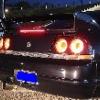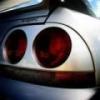can an engine run too cold ???
Announcements
-
Similar Content
-
Latest Posts
-
You have a knack for photography my friend. It makes the 86 look like a complete bucket. The 34 went with you to Europe and back. It's special. (we all feel the same about our 'shitboxes' that every bystander seems to absolutely love)
-
By Dose Pipe Sutututu · Posted
LOL.... you are correct there. -
By joshuaho96 · Posted
It's been quite the ordeal but hey, at least you figured it out. -
The final part arrived today to un-clampify and simplify the intake Who would have though a 1/2" hose stainless bulkhead fitting designed for below waterline bilge pumps would be what I needed Test fit on a 3" offcut I had laying around to see if it would work, and it worked a treat All going well the intake will be on its "final version" tomorrow
-








Recommended Posts
Create an account or sign in to comment
You need to be a member in order to leave a comment
Create an account
Sign up for a new account in our community. It's easy!
Register a new accountSign in
Already have an account? Sign in here.
Sign In Now